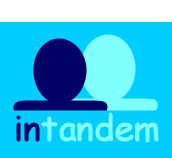As a speech and language therapist and researcher, Mark Ylvisaker inspires my work. Mark was both a speech and language therapist and philosopher, and someone who passionately devoted his life to working with people with brain injury. Back in 2007, he said “in the absence of meaningful engagement in chosen life activities, all interventions ultimately fail”. A phrase like this really resonated with me as a therapist. Therapy needs to be meaningful. However, it wasn’t until a few years ago when a Professor asked me “but what is meaning?” that I started to consider the importance of this term.
In our interactions involving people with brain injury the term “meaningful” is regularly used; meaningful goals, meaningful activities, meaningful roles, meaningful participation and meaningful engagement. But what I found particularly interesting to learn was that philosophers couldn’t agree on the definition of meaning owing to its complex, fluid and multifaceted nature. In fact, philosophers argue that meaning does not surrender itself to a definition. They do agree however, that meaning is comprised of three features: connectedness, coherence, and subjectivity. Connectedness refers to the linking of experiences so that they can be understood and interpreted. Coherence refers to a person making an evaluation of their life or experiences as making sense or being coherent. This is usually done within a bigger context that may include a goal, motivation or life at large. Both connectedness and coherence relate to meaningfulness, as a disconnected and fragmented (incoherent) life is considered meaningless. Subjectivity refers to the subjective experience of connectedness and coherence, as the experiences in a person’s life have no meaning unless they are meaningful to someone.
This started me thinking about how we as therapists create meaning for people with brain injury. Some people may have a notion of what is meaningful to them but need our help to connect and make sense of their experiences. Others have lost meaning in their lives so we need to help them find it again. Meaning can be derived in many ways, from multiple contexts (or sources). An activity or action alone cannot create meaning. It is the emotional response to those activities or actions and the link to a higher purpose, motivation or goal, which is important to the creation of meaning. As a therapist, I’m often left wondering how to do that for people with brain injury. A few years ago, I came across some research by Levasseur and colleagues (2010) who described contexts according to a person’s involvement in an activity (alone through to interaction with others) and the goals of that activity (to satisfy basic needs through to helping others and contributing to society).

Proposed taxonomy of social activities
This “taxonomy” made me realise that much of the therapy I was offering was at some of the lower levels (individual or small group activities focused on fulfilling basic needs e.g. buying a coffee, ordering lunch, having a conversation). Little therapy was focused on helping others or contributing to society in interaction with others. That is not to say we should do that, but rather, doing therapy in multiple contexts (or sources), which includes Levels 4-6, may serve to increase opportunities in which a person with brain injury can derive meaning.
The creation of meaning during the therapy process is considered essential for a person with brain injury to engage with the rehabilitation process. People with brain injury just want to take part in something, give something back to others and be someone important, in spite of their injury. If we can help people with brain injury take part in meaningful activities reflective of their desires, they may also report a better quality of life, which some would consider the ultimate goal of therapy. Some ways in which we could achieve this include: individual and group therapy; therapy in real-life contexts chosen by the person with brain injury; video-taping interactions involving people with brain injury and family members, friends and/or significant others; completion of projects designed to help others learn more about brain injury or help brain injury survivors cope with the experience of sustaining a brain injury; setting goals that relate directly to something bigger (e.g. getting a girlfriend, getting a job). These are just some examples of the contexts that may help people with brain injury find meaning in their lives.
Ultimately, I wrote this blog to convey a simple message: how important it is to help a person with brain injury find meaning in their lives. This message attests to Mark’s legacy who was dedicated to making lives for people with brain injury both meaningful and satisfying. Not losing sight of what is meaningful to our patients and clients is what we can do as therapists to take his life’s work forward.

Dr Nicholas Behn
Speech and Language Therapist
City University London
